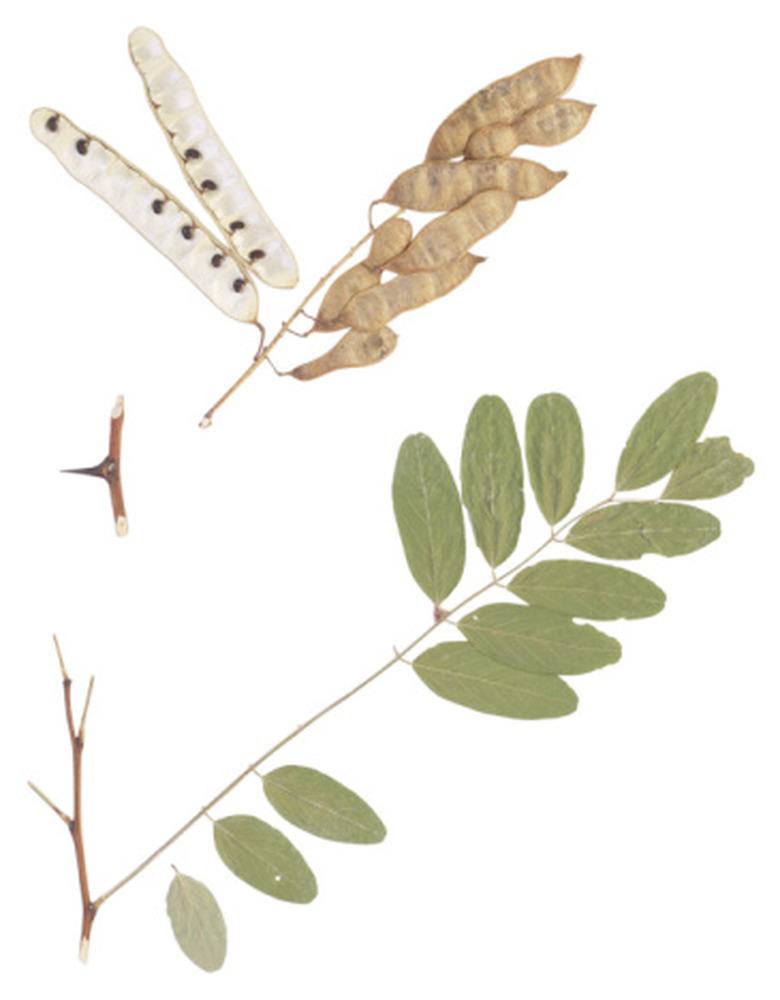Trees With Thorns In Texas
Trees develop thorns as a measure of protection from animals and birds that may cause damage. Homeowners and growers in Texas may choose to avoid such trees because of the danger they present, or they might select them for planting specifically for their pointy protrusions. Such trees can be used to discourage humans from entering an area or to discourage humans and animals from coming into contact with the trees.
Thorny Trunks
Thorny Trunks
Honey locusts (Gleditsia triacanthos) are found mainly in eastern portions of Texas. Three-pronged thorns cover the trunk and branches of these native Texas trees, and the thorns can potentially reach up to a foot in length. Drought-tolerant and adaptable, the trees offer soft summer foliage and fall color. A thorn-less variety (Gleditsia triacanthos var. inermis) is available.
Jerusalem thorns (Parkinsonia aculeata) form needle-like thorns on their trunks and sharp spines on their twigs. The trees show tolerance of limestone soils, drought, heat and salt. Another Texas native, the fast-growing trees have long, thin leaves and hanging panicles of yellow flowers.
Fruit Producers
Fruit Producers
Saffron plum trees (Bumelia celastrina), also called La Coma trees, are native Texas. These small trees are usually found on the plains of the Rio Grande and across the Gulf prairies and marshes in the southern part of the state. The trees develop small spines on the twig ends and branches. Saffron plums tolerate heat, low water conditions and alkaline soils. These evergreens feature bell-shaped flowers, and birds and animals feed on their berries.
Mexican lime trees (C. aurantifolia), also known as key lime or West Indian lime, present with short, spiny thorns. The trees develop small, flavorful and fragrant limes. Growers can opt for a thorn-less variety, but these versions have proven to be less productive.
Pod Producers
Pod Producers
Mesquite (Prosopis glandulosa) is a Texas native, found throughout the state. The trees have a bad reputation for their invasive tendency, especially on grazing sites, since the thorns pose a danger to cattle. Mesquite produces long thorns, sometimes measuring 2 inches in length. The trees adapt to most soils, tolerate very high heat and drought conditions, and offer fragrant flowers and long bean pods.
Cold-hardy Roemer's acacia (Acacia roemeriana) produces cat-claw-shaped thorns. The trees are evergreen or semi-evergreen and tolerant of low-water and high-heat conditions. The trees adapt to alkaline and limestone soils. These native trees bloom in spring and produce flattish, somewhat twisted pods.
Spiny Foliage
Spiny Foliage
American holly trees (Ilex opaca) have thorny foliage. Multiple spines run along the margin of each leaf. This slow-growing evergreen shows tolerance of drought, alkaline soil, deep shade and salt, and the trees adapt to a range of soils. American holly produces a fruit that is attractive to humans and wildlife. The trees offer winter interest and resistance to pests, but the flowers are inconspicuous. The bark of the tree is vulnerable to damage, but the tree itself is resistant to breakage.
References
- University of Florida IFAS Extension; Ilex Opaca: American Holly; Edward F. Gilman; 2009
- Texas A&M University, Aggie Horticulture: Texas Native Plants Database: Honey Locust...
- Texas A&M University, Aggie Horticulture: Texas Native Plants Database: Retama, Jerusalem Thorn...
- Texas A&M University: Texas Tree Planting Guide — Coma
- Texas A&M University, Aggie Horticulture; Texas Citrus and Subtropical Fruits; Home Fruit Production — Limes; Julian W. Sauls, Ph.D.; December 1998
- Texas A&M University, Aggie Horticulture: Texas Native Plants Database: Mesquite...
